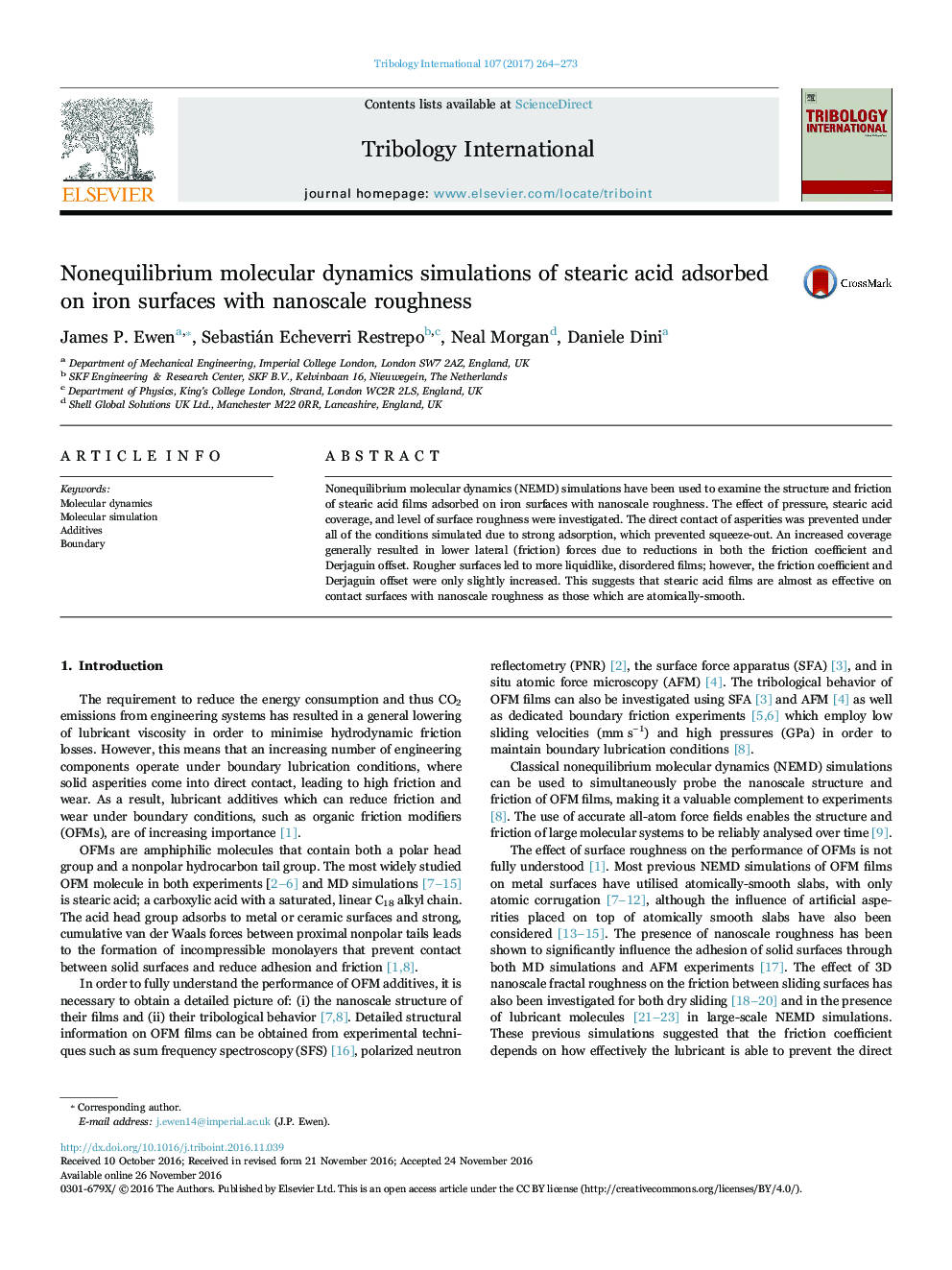| Article ID | Journal | Published Year | Pages | File Type |
|---|---|---|---|---|
| 4986233 | Tribology International | 2017 | 10 Pages |
â¢Simulations of stearic acid on iron surfaces with nanoscale roughness were performedâ¢Films maintained the separation of opposing surfaces under high applied pressuresâ¢Effect of coverage/roughness on the friction coefficient/Derjaguin offset determinedâ¢Lower friction coefficients obtained with stearic acid than for n-hexadecane
Nonequilibrium molecular dynamics (NEMD) simulations have been used to examine the structure and friction of stearic acid films adsorbed on iron surfaces with nanoscale roughness. The effect of pressure, stearic acid coverage, and level of surface roughness were investigated. The direct contact of asperities was prevented under all of the conditions simulated due to strong adsorption, which prevented squeeze-out. An increased coverage generally resulted in lower lateral (friction) forces due to reductions in both the friction coefficient and Derjaguin offset. Rougher surfaces led to more liquidlike, disordered films; however, the friction coefficient and Derjaguin offset were only slightly increased. This suggests that stearic acid films are almost as effective on contact surfaces with nanoscale roughness as those which are atomically-smooth.
Graphical abstractDownload high-res image (640KB)Download full-size image
